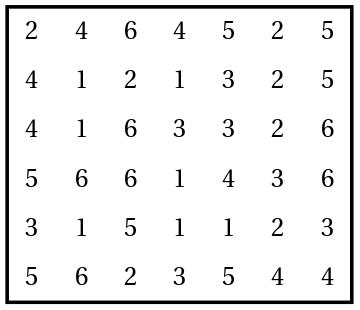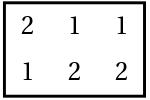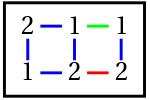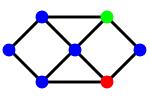14th December 2011, 10:38 am
The following variation of a Bulls and Cows problem was given at the Fall 2008 Tournament of the Towns:
A test consists of 30 true or false questions. After the test (answering all 30 questions), Victor gets his score: the number of correct answers. Victor doesn’t know any answer, but is allowed to take the same test several times. Can Victor work out a strategy that guarantees that he can figure out all the answers after the 29th attempt? after the 24th attempt?
Let’s assume that we have a more general problem. There are n questions, and a(n) is the smallest number of times we need to take the test to guarantee that we can figure out the answers. First we can try all combinations of answers. This way we are guaranteed to know all the answers after 2n attempts. The next idea is to start with a baseline test, for example, to say that all the answers are true. Then we change answers one by one to see if the score goes up or down. After changing n − 1 answers we will know the answers to the first n − 1 questions. Plus we know the total number of true answers, so we know the answers to all the questions. We just showed that a(n) ≤ n.
This is not enough to answer the warm-up question in the problem. We need something more subtle.
Let’s talk about the second part of the problem. As we know, 24 = 4 ⋅ 6. So to solve the second part, on average, we need to find five correct answers per four tests. Is it true that a(5) ≤ 4? If so, can we use it to show that a(30) ≤ 24?
The following three cases are the most fun to prove: a(5) = 4, a(8) ≤ 6, and a(30) ≤ 24. Try it!
By the way, K. Knop and L. Mednikov wrote a paper (available in Russian) where they proved that a(n) is not more than the smallest number k such that the total number of ones in the binary expansion of numbers from 1 to k is at least n − 1. Which means they proved that a(30) ≤ 16.
Share:





13th December 2011, 09:49 pm

On the left is a puzzle from the 2000 Qualifying Test for USA and Canada teams to compete in the world puzzle championship. A set of all 21 dominoes has been placed in a 7 by 6 rectangular tray. The layout is shown with the pips replaced by numbers and domino edges removed. Draw the edges of the dominoes into the diagram to show how they are positioned.
We would like to discuss the mathematical theory behind this puzzle using a toy example below. Only three dominoes: 1-1, 1-2, 2-2 are positioned on the board and the goal is to reconstruct the positioning:

Let’s connect adjacent numbers with segments to show potential dominoes and color the segments according to which domino they represent. The 1-1 edge is colored green, the 1-2 — blue, and the 2-2 — red. Now our puzzle has become a graph, where the numbers are vertices, the segments are edges, and the edges are colored. In this new setting, the goal of the puzzle is to find edges of three different colors so that they do not share vertices.
The next picture represents the line graph of the previous graph. Now the colors of the vertices correspond to different potential dominoes. Vertices are connected if the corresponding dominoes share a cell. In the new setting finding dominoes that do not share a cell is equivalent to finding an independent set. The fact that we need to use all possible dominoes means that we want the most colorful independent set.


Share:





7th December 2011, 04:28 pm
* * *
— If a black cat crosses in front of you and then crosses back, what does it mean? Is your bad luck doubled or canceled?
— Is this a scalar or a vector cat?
— Huh?
— A scalar cat doubles and a vector cat cancels.
* * *
Unbuttered bread, unable to cause the usual harm, tries to fall on the dirtiest spot.
* * *
Chance is a design carefully planned by someone else.
* * *
Wikipedia: I know everything.
Google: I can find anything.
Facebook: I know everyone.
Internet: You are nothing without me.
Electricity: Shut up, jerks.
* * *
Yesterday I bought pills to increase my IQ. Couldn’t open the jar.
* * *
Today I opened my desktop’s case and finally understood whither my trash is emptied.
Share:





4th December 2011, 12:25 pm
I just discovered a Russian Internet Linguistics Olympiad. Even though most linguistics problems are not translatable, this time we are lucky. My favorite problem from this Olympiad is related to chemical elements — their names in Russian have the same logical structure as in English. Keep in mind, the problem doesn’t assume any knowledge of chemistry. Here is the problem:
The formulae for chemical elements and their names are given below in mixed order:
C3H8, C4H6, C3H4, C4H8, C7H14, C2H2;
Heptene, Butine, Propane, Butene, Ethine, Propine.
- Match the formulae with their names. Explain your solution.
- Write the names of the elements with the following formulae: C2H4, C2H6, C7H12.
- Write the formulae for the following elements: Propene, Butane.
Share:








